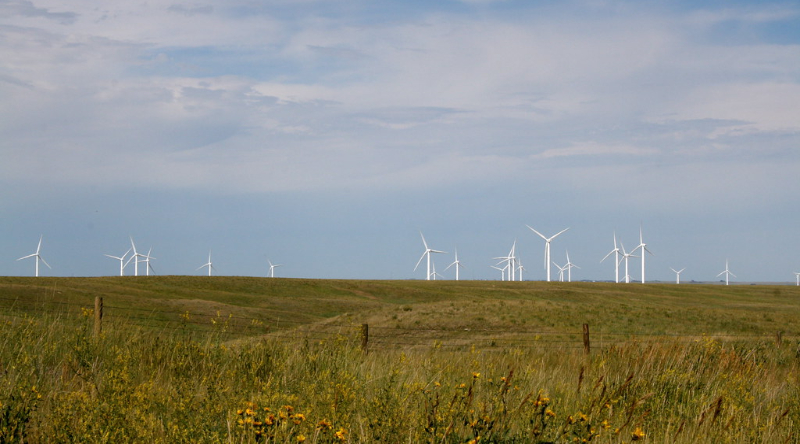Concerns are mounting in Wyoming as state politicians express discontent with the Trump Administration’s renewed focus on fossil fuels, particularly in light of the potential loss of tax incentives for the renewable energy sector. Despite the critical role of wind and solar energy in Wyoming’s electricity generation, the administration’s recent policies threaten to undermine these initiatives at a time when they are crucial for economic stability.
Wyoming currently produces approximately 10,200 megawatts of electricity from various sources, with nearly one-third stemming from wind and solar energy. This amount is significant, as one megawatt can power roughly 750 homes. The state exports more than half of its electricity to customers beyond its borders. However, the impending loss of federal tax credits could lead to the collapse of numerous renewable energy projects, raising electricity costs for residents.
Jason Grumet, CEO of the American Clean Power Association, voiced his concerns, stating, “While the new policies are a step backward, the combination of surging demand for electric power and economic benefits of renewable energy technologies ensure that clean power will continue to play a significant and growing role in our nation’s energy mix.” He emphasized the need for a balanced approach to energy that supports all forms of American energy.
The Power Company of Wyoming’s Chokecherry and Sierra Madre Wind Energy Project in Carbon County is expected to enhance the state’s power generation capacity by over 3,500 megawatts. This ambitious project, which will feature 600 turbines, is set to qualify for federal tax credits, with plans for phased production aimed at full operation by 2030. However, the uncertainty surrounding federal support casts a shadow over future developments in Wyoming’s renewable energy landscape.
According to a report by WalletHub, Wyoming has the highest average monthly energy costs in the nation, averaging $1,591. This is attributed to the state’s heavy reliance on motor fuel and residential oil consumption. The Clean Energy Buyers Association, representing over 400 members including major corporations like Microsoft and Amazon, warned that losing the 45Y and 48E tax credits could result in a staggering 29% increase in electricity costs, the highest in the United States.
An executive order signed by Trump directed the Treasury Department to enforce the termination of clean electricity production and investment tax credits for wind and solar facilities. This order sets a deadline for projects to commence construction before July 4, 2026 and to become operational by the end of 2027, significantly shortening the eligibility timeline. The order has faced criticism for its negative implications on renewable energy development.
In a recent survey conducted by the University of Wyoming, residents indicated a strong awareness of climate change and its impact on water resources. They also expressed support for community response plans and statewide policies to address these challenges. Notably, Wyoming is one of the few states that impose a tax on wind energy generation, generating millions of dollars annually for local governments hosting wind projects.
Despite the challenges, the transition to renewable energy has shown remarkable progress. Since August 2022, at least 160 clean energy manufacturing facilities have been announced, spurred by incentives in the Inflation Reduction Act. These developments are projected to create 100,000 new manufacturing jobs and attract investments totaling $500 billion, with $75 billion already allocated.
On a global scale, the urgency for a transition to renewable energy was underscored by UN Secretary-General António Guterres, who recently stated that the world has “passed the point of no return” regarding the shift to clean energy. He highlighted significant investments in clean energy, which exceeded those in fossil fuels by $800 billion last year.
The renewable energy sector continues to advocate for its potential to meet rising energy demands efficiently. Despite the current federal policies favoring coal, solar and wind energy remain the fastest-growing sources of electricity generation. Solar power, in particular, has been expanding rapidly, with installations occurring at an unprecedented rate.
As Wyoming navigates these shifting dynamics, the future of its renewable energy sector hangs in the balance. The state’s politicians must consider the economic implications of their energy strategies while addressing the concerns of their constituents, who could face higher electricity bills amid an evolving energy landscape.






































































